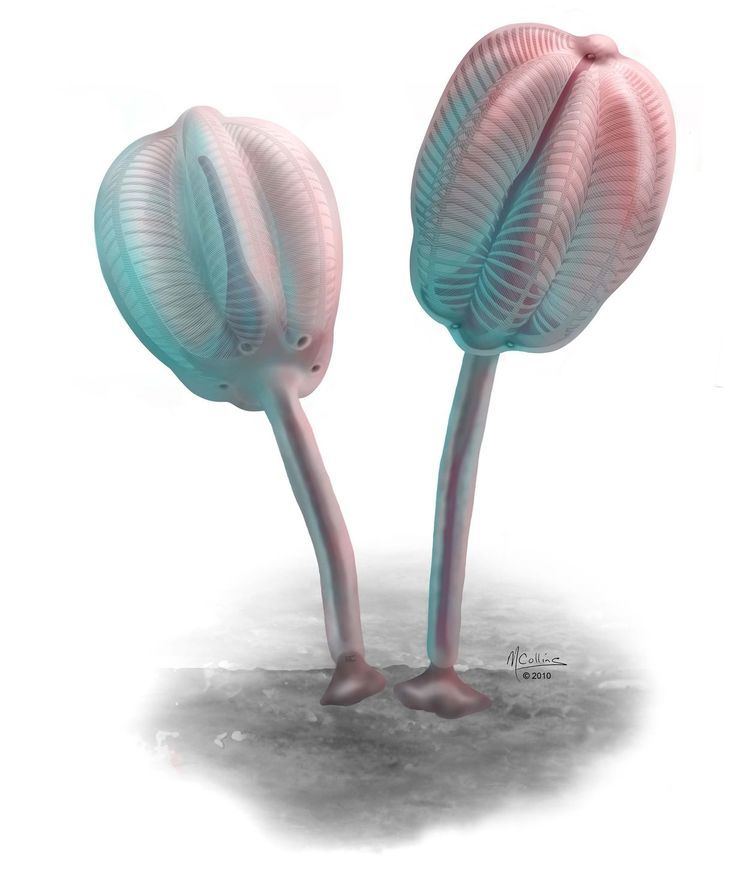Rank Species | ||
 | ||
Family †SiphusauctidaeO'Brien & Caron, 2012 Genus †SiphusauctumO'Brien & Caron, 2012 Similar Herpetogaster, Dinomischus, Odaraia, Echmatocrinus, Nectocaris | ||
Siphusauctum gregarium is an extinct genus of filter-feeding animals that lived during the Middle Cambrian about 510 million years ago. Attached to the substrate by a holdfast, it had a tulip-shaped body, called the calyx, into which it actively pumped water that entered through pores and filtered out and digested organic contents. It grew to a length of only about 20 cm (7.9 in).
It was described in 2012 from numerous fossils recovered from the "Tulip Beds" strata of the Burgess Shale of Yoho National Park, British Columbia, Canada. The generic name comes Latin siphus ("cup" or "goblet") and auctus ("large"), referring to the general shape and size of the animal. The specific epithet comes from Latin gregalis ("flock" or "herd") referring to the large numbers of specimens recovered. It is the only species classified under the genus Siphusauctum and the family Siphusauctidae.
